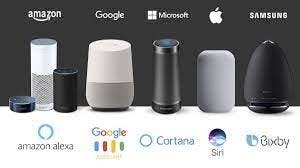A virtual assistant is a software program or application that uses artificial intelligence (AI) and natural language processing (NLP) to perform tasks and provide assistance to users. Virtual assistants are designed to simulate human-like interactions and can be accessed through various devices such as smartphones, tablets, and computers.
Some examples of virtual assistants include Apple's Siri, Amazon's Alexa, Google Assistant, and Microsoft's Cortana. Virtual assistants can perform a variety of tasks such as setting reminders, scheduling appointments, playing music, answering questions, sending text messages, and controlling smart home devices. They can also learn and adapt to a user's preferences over time, making them more personalized and efficient.
Types of virtual assistants
There are several types of virtual assistants, each with its own features and capabilities. Here are some of the most common types of virtual assistants:
Personal virtual assistants: These are the most common type of virtual assistants, designed to assist individuals with their daily tasks such as scheduling appointments, sending emails, and setting reminders.
Business virtual assistants: These virtual assistants are designed for businesses and can manage customer inquiries, schedule meetings, and handle
administrative tasks.
Chatbots: Chatbots are virtual assistants that are designed to communicate with users through text or voice chat. They can answer questions, provide customer service, and even offer personalized recommendations.
Voice-activated assistants: These virtual assistants are designed to be activated and controlled using voice commands. Examples include Amazon's Alexa, Apple's Siri, and Google Assistant.
Specialized virtual assistants: These virtual assistants are designed for specific industries or tasks. For example, healthcare virtual assistants can help patients manage their medications, while financial virtual assistants can provide investment advice.
Social media virtual assistants: These virtual assistants are designed to help individuals and businesses manage their social media accounts. They can schedule posts, respond to messages, and track engagement.

Overall, virtual assistants are becoming more versatile and capable as technology advances, and they are being integrated into more and more areas of our lives.
Virtual assistant devices and technology
Virtual assistants can be accessed through various devices and technologies. Here are some of the most common:
Smartphones: Many virtual assistants are integrated into smartphones, such as Apple's Siri and Google Assistant. Users can activate these virtual assistants by speaking a wake-up phrase, and they can perform a variety of tasks such as making calls, sending messages, and setting reminders.
Smart speakers: Virtual assistants can also be accessed through smart speakers such as Amazon's Alexa and Google Home. These devices are always listening for voice commands and can perform a variety of tasks such as playing music, controlling smart home devices, and providing information.
Wearables: Virtual assistants can be accessed through wearable devices such as smartwatches and fitness trackers. Users can control these virtual assistants using voice commands or through the device's touch screen.
Smart TVs: Some intelligent TVs come equipped with virtual assistants, such as Samsung's Bixby. These virtual assistants can help users search for content, change channels, and adjust settings.
Chatbots: Chatbots are virtual assistants accessed through messaging apps and websites. Users can interact with these virtual assistants using text or voice commands.
Robotics: Virtual assistants can also be integrated into robotics devices such as smart home robots and service robots. These devices can perform tasks such as cleaning, cooking, and assisting people with disabilities.

Overall, virtual assistant technology is constantly evolving and becoming more integrated into our daily lives. As technology advances, we can expect to see virtual assistants integrated into more devices and technologies, making them even more versatile and capable.
Capabilities of virtual assistants
Virtual assistants typically perform simple jobs for end users, including the following:
adding tasks to a calendar
providing information that would normally be searched in a web browser
controlling and checking the status of smart home devices, including lights, cameras and thermostats
making and receiving phone calls
creating text messages
getting directions
hearing news and weather reports
finding hotels or restaurants
checking flight reservations
listening to music
playing games.
Privacy concerns
Some consumers have expressed privacy concerns about virtual assistants, such as Amazon Alexa and Google Home because these virtual assistants require large amounts of personal data and are always "listening" in order to respond to voice commands. Virtual assistants then retain voice interactions and personal information to improve the user experience.
Cortana, for example, works best by using data from a user's device, including emails and other communications, a user's contacts, location data, search history and data from other Microsoft services and skills -- third-party applications -- that users choose to connect with. Users can choose not to sign in and share this data with Cortana and can adjust permissions to prevent certain data from being collected, though these actions limit the virtual assistant's usefulness.
Virtual assistant providers also maintain privacy policies, which define how each company uses and shares personal information. In most cases, companies do not share customer-identifiable information without a customer's consent.
